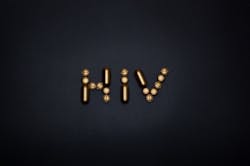A newly identified group of antibodies that binds to a coating of sugars on the outer shell of HIV is effective in neutralizing the virus and points to a novel vaccine approach that could also potentially be used against SARS-CoV-2 and fungal pathogens, researchers at the Duke Human Vaccine Institute report as described in a news release.
In a study appearing online in the journal Cell, the researchers describe an immune cell found in both monkeys and humans that produces a unique type of anti-glycan antibody. This newly described antibody attaches to the outer layer of HIV at a patch of glycans — the chain-like structures of sugars that are on the surfaces of cells, including the outer shells of viruses.
“This represents a new form of host defense,” said senior author Barton Haynes, MD, Director of the Duke Human Vaccine Institute (DHVI). “These new antibodies have a special shape and could be effective against a variety of pathogens. It’s very exciting.”
More than 50% of the virus’s outer layer is comprised of glycans. Haynes said it has long been a tempting approach to unleash anti-glycan antibodies to break down these sugar structures, triggering immune B-cell lymphocytes to produce antibodies to neutralize HIV.
Instead, HIV is cloaked in sugars that look like the host’s glycans, creating a shield that makes the virus appear to be part of the host rather than a deadly pathogen.
But the newly identified group of anti-glycan antibodies — referred by the Duke team as Fab-dimerized glycan-reactive (FDG) antibodies — had gone undiscovered as a potential option.
To date, there was only one report of a similar anti-glycan HIV antibody with an unusual structure that was found 24 years ago (termed 2G12). The Duke team has now isolated several FDG antibodies and found that they display a rare, never-before-seen structure that resembled 2G12. This structure enables the antibody to lock tightly onto a specific, dense patch of sugars on HIV, but not on other cellular surfaces swathed in host glycans.
Additional studies will explore ways of harnessing the antibody and deploying it against these pathogens.

